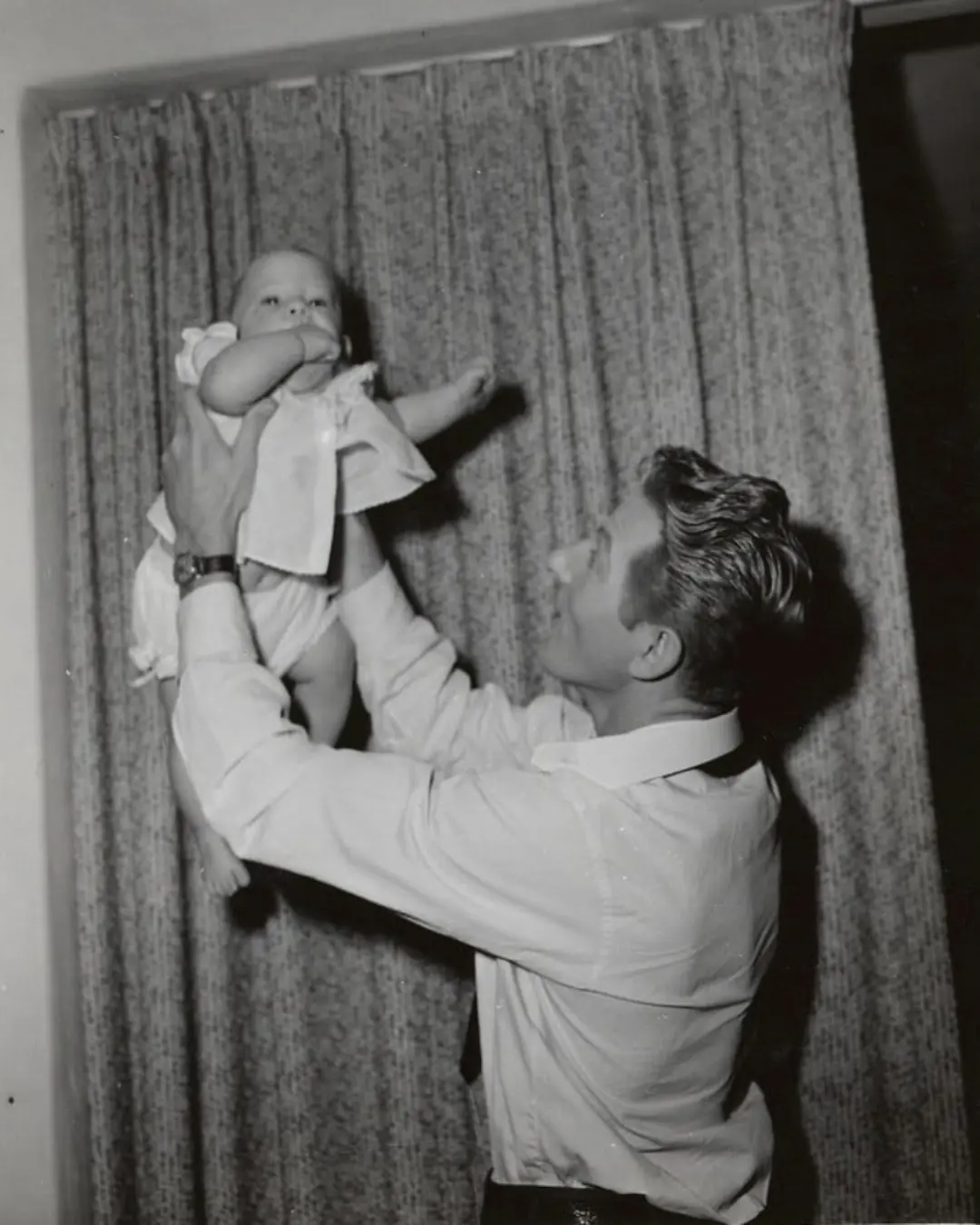
Sydney Under the Red Moon: How One Photograph Captured the Magic of a Lunar Eclipse
Last night, as twilight descended over Sydney and the city's skyline slipped into shadow, the heavens unveiled one of nature’s most awe-inspiring phenomena—a total lunar eclipse. It was a spectacle that paused time: the Moon, cloaked in a deep, smoldering crimson, rose slowly above the iconic sails of the Sydney Opera House. In that moment, the familiar became otherworldly, and the ordinary skyline turned into a scene of celestial drama—so surreal it could have been mistaken for a painting or a dream.
At the heart of this magical scene was a single image, now rapidly spreading online: a photograph taken by Australian photographer Ethan Callaghan. The photo shows the Blood Moon looming impossibly large, seemingly suspended behind the Opera House like a glowing lantern lit by the universe itself. Its surface bursts with detail and vibrant color, framed perfectly against the geometry of Sydney’s most recognizable landmark.
At first glance, many viewers assumed the image was digitally manipulated. Surely, they thought, such a perfectly timed, cinematic shot couldn’t be real. But it is. No Photoshop. No CGI. Just physics, optics, and an artist’s eye—captured using a technique known as telephoto compression.
The Science Behind the Spectacle
To most people, the Moon appears small and distant when viewed with the naked eye. But in Ethan’s photograph, it dominates the frame, transforming into a celestial giant. This isn't due to trickery—it’s a result of how perspective shifts through the use of telephoto lenses.
Here’s how the magic works:
Using a telephoto lens with a focal length between 300mm and 600mm, the photographer positions themselves far from the foreground subject—in this case, the Sydney Opera House. The Opera House remains relatively small in the frame due to the distance. But the Moon, though vastly farther away, is optically "pulled" closer by the lens. The result is perspective compression, an effect that visually shrinks the distance between foreground and background, making the Moon appear massive in relation to the building.
But this technique demands far more than just powerful gear. It requires meticulous planning, patience, and a deep understanding of both astronomy and geography. Ethan studied moonrise charts, weather forecasts, and topographic maps for weeks. He calculated angles and identified a vantage point that would allow the Moon to rise precisely behind the Opera House during the peak of the eclipse.
Then came the waiting—a quiet, focused kind of anticipation that every landscape photographer knows. Camera on tripod, eyes on the sky, fingers ready. There’s no second chance. The Moon rises on its own schedule. You only get one shot.
The Blood Moon: Science Meets Myth
The image itself coincided with a total lunar eclipse, a rare event during which the Earth moves directly between the Sun and the Moon, casting its shadow across the lunar surface. But rather than disappearing into darkness, the Moon took on a dramatic reddish hue—a phenomenon caused by sunlight filtering through the Earth’s atmosphere.
As sunlight passes through our planet’s thickest layers of air, blue and green wavelengths scatter, while the longer red wavelengths bend and continue on to softly illuminate the Moon. The result is a burnished glow—somewhere between copper and ember—earning the event the name “Blood Moon.”
For millennia, this celestial transformation has captured human imagination. Ancient cultures often viewed it as an omen, a message from the gods, or a harbinger of change. Today, we understand the physics behind it, yet the wonder remains untouched. Science has explained the “how,” but the “why it moves us” still belongs to poetry and awe.
A Photograph That Teaches Us to See Differently
Ethan Callaghan’s photograph does more than document a rare astronomical event. It offers something deeper: a lesson in perspective. Both literally and metaphorically.
It reminds us that what we see—what we think we understand—is shaped by how we look at it. A slight shift in position, a change in timing, a new lens—these small adjustments can reveal beauty we never noticed, or truths we never considered. The Moon did not change. The Opera House did not move. But through Ethan’s eye and technique, they were transformed.
Photography, at its best, doesn’t just show us what’s in front of us. It shows us how to feel about it. And in this case, it tells us something timeless: that wonder still exists, even in the middle of a busy city.
A City Paused by the Sky
For those who gathered along the Sydney Harbour last night, the memory is already etched in their minds: people of all ages looking skyward, hushed, their devices trying (and mostly failing) to capture what their eyes and hearts were already recording. There was something communal in that moment—strangers smiling at each other, families whispering, children pointing excitedly at the sky. For a little while, the noise of modern life gave way to quiet reverence.
For those who missed it, Ethan’s photo offers more than just a record. It’s a window into what was felt—the scale of the Moon, the stillness of the city, the heartbeat of the universe aligning with our own.
A Cosmic Reminder
The Blood Moon has already faded. The Opera House resumes its usual rhythm of concerts and crowds. But for one fleeting night, something extraordinary happened: Earth, Moon, light, shadow, and human curiosity aligned.
It’s a reminder that no matter how grounded we feel in routine, we’re still part of something vast, ancient, and breathtakingly beautiful. Even in our most familiar places, the universe continues to write poetry—if only we remember to look up.
And thanks to photographers like Ethan Callaghan, even those moments that pass too quickly can still be captured, shared, and remembered.
News in the same category


Forever Our Indy: A Tribute to a True Best Friend

People Spotted a Dog Collapsed on a Sidewalk — Then Realized She Was Still Alive

This Senior Dog Can’t Climb the Stairs Anymore — So Dad Sleeps on the Sofa with Him Every Night

A Final Goodbye: Mario’s Last Moment with the Giraffes He Loved

Shy Golden Retriever Saved From Euthanasia at the Last Moment
The Dog Who Beat Cancer: A Reunion That Moved the World.

The Lion Who Lost His Mane, and the Tiger Who Won His Heart.

Her Heart Belongs to Daddy: A Daughter’s Memory of Danny Kaye.

A Father Chosen by Love

Goodbye, Noor Jehan: The Elephant Who Made a Nation Weep.

A New Leash on Life: One Rescue Pup’s Journey Home

From Trash to Triumph: How One Young Man Saved a Chihuahua From a Cruel Fate

I Set Off in My RV to Scatter My Mother’s Ashes But Met a Man Who Revealed a Shocking Family Secret — Story of the Day

“A Final Gift: How a Real-Life Bambi Brought Joy to a Mother in Her Last Days”

They Forced Me & my Baby Granddaughter Out of the Café and Into the Rain – Then Justice Walked Inn

My Husband Constantly Mocked Me for Doing Nothing, Then He Found My Note After the ER Took Me Away

A Simple Gift at Dinner Reminds a Family That Kindness Still Exists

I Found My Daughter’s Wedding Dress Cut to Pieces with My Stepdaughter Standing over It – I Thought She Did It, but I Was Wrong
News Post

Garlic, tomatoes and cucumbers will grow rapidly. The most powerful fertilizer.

12 Powerful Benefits of Moringa Seeds

25 Incredible Health Benefits of Goosegrass

Pineappleweed (Matricaria discoidea) – Nature’s Calming Herb with Surprising Benefits

Grow potatoes in containers at home with just one potato

A Heartwarming Story of Hope: Surrendered Dog in Christmas Sweater Awaits a Loving Home

The Power of Chanca Piedra: 10 Benefits and Uses

Wood Sorrel Benefits and Uses

Forever Our Indy: A Tribute to a True Best Friend

The four medicinal leaves: Avocado leaves, mango leaves, bay leaves, and guava leaves

People Spotted a Dog Collapsed on a Sidewalk — Then Realized She Was Still Alive

This Senior Dog Can’t Climb the Stairs Anymore — So Dad Sleeps on the Sofa with Him Every Night

A Final Goodbye: Mario’s Last Moment with the Giraffes He Loved

Shy Golden Retriever Saved From Euthanasia at the Last Moment
The Dog Who Beat Cancer: A Reunion That Moved the World.

The Lion Who Lost His Mane, and the Tiger Who Won His Heart.

Her Heart Belongs to Daddy: A Daughter’s Memory of Danny Kaye.

A Father Chosen by Love
